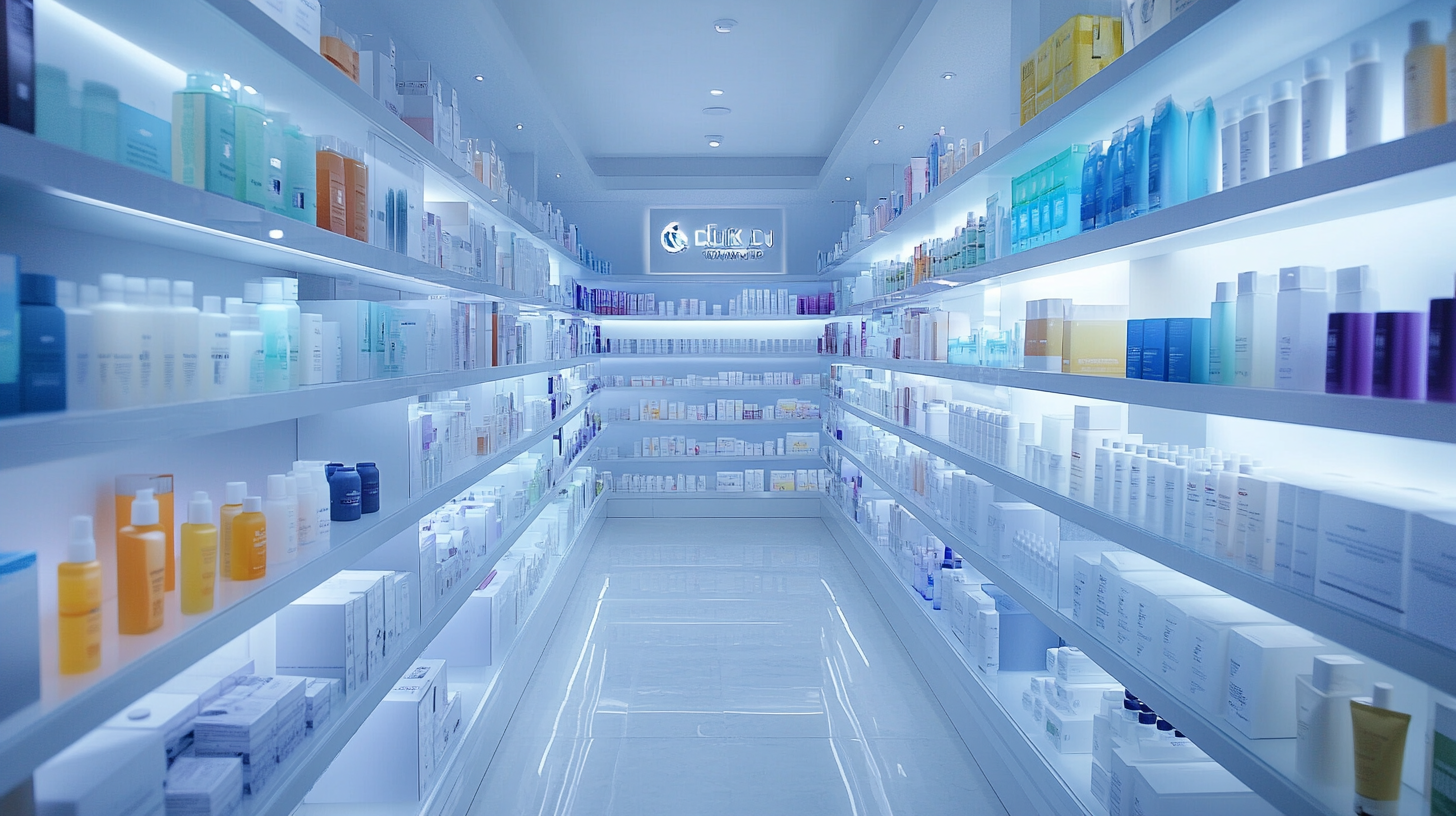Blog
Evaluating Global Trends in Health Care Products: A Data-Driven Comparison for Buyers
In the rapidly evolving landscape of Health Care, buyers are increasingly faced with the challenge of making informed decisions amidst a myriad of options. According to a report by the World Health Organization (WHO), the global health care market is projected to reach USD 665 billion by 2024, underscoring the significant economic impact of health care products. As consumers and institutions alike seek to optimize their expenditures and enhance patient outcomes, leveraging data-driven insights has become imperative.
Moreover, a recent analysis from Deloitte indicates that advancements in technology and data analytics are transforming the health care sector, allowing for better tracking of health care product efficacy and costs. By comparing global trends and performance metrics, buyers can identify opportunities to improve their procurement strategies, ensuring that they select the most effective health care products tailored to their specific needs. This blog aims to provide a comprehensive evaluation of current trends and offers a data-driven comparison to assist in making informed purchasing decisions in the complex market of health care products.

Key Factors Influencing Global Health Care Product Trends
The global trends in health care products are shaped by a myriad of factors that influence consumer preferences and purchasing decisions. One significant area of interest is the hair care market, which encompasses a diverse range of products including shampoos, conditioners, styling aids, and hair oils. According to recent analyses, the hair care segment is poised for substantial growth, driven by changing consumer attitudes towards personal grooming and the increased focus on high-quality, effective formulations. As buyers become more discerning, the demand for innovative and specialized products will continue to rise, making it imperative for brands to align their offerings with current trends. Another crucial aspect influencing the health care product landscape is the distribution channel through which these products are sold. The emergence of e-commerce has revolutionized consumer access, providing convenience and a broader product selection than traditional retail avenues such as supermarkets and specialty stores. This shift highlights the importance of an omnichannel strategy for brands aiming to capture the evolving purchasing habits of consumers, particularly as online shopping becomes increasingly prevalent. Furthermore, the growth of the foot care product market underscores the need for tailored solutions to address specific health concerns. With a range of offerings such as foot creams, insoles, and moisture socks catering to diverse categories including personal use and athlete care, suppliers are responding to the nuanced demands of their target demographics. As the global population continues to rise, brands must remain agile and responsive to the development of health care trends that prioritize both efficacy and inclusivity.

Emerging Markets: Opportunities and Challenges in Health Care Products
Emerging markets are rapidly transforming the landscape of health care products, presenting both significant opportunities and inherent challenges for buyers. According to a report from the International Market Analysis Research and Consulting Group (IMARC), the global health care products market is projected to reach $1.2 trillion by 2025, with emerging markets such as India and Brazil expected to account for a substantial portion of this growth. The increasing demand for affordable medical devices and pharmaceutical products in these regions is opening avenues for companies willing to invest and adapt to local market dynamics.
However, tapping into these markets does not come without its challenges. A 2023 report by Deloitte highlights that regulatory complexities and varying healthcare standards pose significant hurdles for foreign companies. For instance, navigating the diverse compliance requirements in countries like Nigeria or Indonesia can delay product launches and increase operational costs. Additionally, cultural differences and healthcare literacy levels can affect how products are received, requiring tailored marketing strategies that resonate with local populations.
Moreover, competition is intensifying as local manufacturers rise to prominence. A study by McKinsey noted that homegrown companies in markets like China have become formidable competitors, capitalizing on their understanding of local needs and preferences. This competitive landscape necessitates a nuanced approach, emphasizing the importance of partnerships with local stakeholders to gain insights and establish trust. By leveraging data-driven strategies to analyze market trends and consumer behavior, businesses can position themselves effectively to harness the potential of these burgeoning markets.

Data Analysis Techniques for Evaluating Health Care Products
In the contemporary landscape of health care products, data analysis techniques are vital for assisting buyers in making informed decisions. With the recent highlights from the first Real World Data Medical Insurance Innovation Application Conference held in Hainan, it is becoming increasingly clear that leveraging real-world data can enhance the evaluation process of health care products. The conference emphasized the need for innovative applications of data to refine medical insurance systems and promote high-quality development in health care.
Data-driven decision-making is particularly crucial, as illustrated by the recent transaction involving over 30 billion pieces of medical testing data. This transaction, completed by a leading third-party medical testing company, marks a significant milestone in data commerce within the health sector, demonstrating the tangible benefits of harnessing large datasets. Such expansive data availability empowers buyers and stakeholders with the insights necessary to assess market trends, product efficacy, and regulatory compliance.
Moreover, the advancement of Artificial Intelligence (AI) in medical devices presents both opportunities and challenges in product evaluation. The release of detailed approval guidelines for AI medical devices indicates a shift towards more rigorous evaluation standards. To maintain compliance and ensure patient safety, industry players must adopt comprehensive data analysis frameworks that capture real-time performance metrics throughout the product lifecycle. This dynamic approach not only enhances regulatory compliance but also fosters trust among consumers and healthcare providers alike.
The integration of these data analysis techniques underscores the importance of adopting a systematic method for evaluating health care products, ensuring that buyers are equipped with the relevant insights to make sound investment choices in an increasingly complex market.

Comparative Analysis: Cost vs. Quality in Health Care Purchases
In the healthcare sector, the ongoing debate between cost and quality remains a pivotal concern for buyers. Recent industry reports indicate that U.S. healthcare spending reached approximately $4.1 trillion in 2020, with projections suggesting that it might surpass $6 trillion by 2028. This staggering figure highlights a pressing need for healthcare purchasers to critically evaluate their investments in products and services. According to a study by the National Academy of Medicine, nearly 30% of this spending is considered wasteful, emphasizing that buyers should not only prioritize cost but also the quality of healthcare products.
Quality metrics, such as patient outcomes and satisfaction, have become increasingly essential in the comparative analysis. The World Health Organization's report implies that hospitals adopting high-quality standards can reduce overall costs by up to 20%. Buyers are encouraged to utilize tools and frameworks like the Health Quality Improvement Partnership that assess the efficiency and effectiveness of healthcare products based on compelling data. Research from the Institute for Healthcare Improvement reveals that for every dollar spent on quality improvement, organizations can expect a return of $3 to $5 in cost savings, underscoring the financial benefits of prioritizing quality over mere cost reduction.
As the healthcare landscape evolves, buyers must leverage data-driven insights to strike the right balance between cost and quality. Investing in high-quality healthcare products could help reduce long-term expenses associated with poor outcomes and patient dissatisfaction. Reports from McKinsey & Company further bolster this argument, stating that organizations focusing on quality experience lower litigation costs and enhanced reputation in the marketplace, fostering not just patient loyalty but also a sustainable growth model.
Future Predictions: The Evolution of Health Care Product Demands
The healthcare product landscape is rapidly evolving, driven by technological advancements, demographic shifts, and changing consumer preferences. According to a report by Fortune Business Insights, the global healthcare products market is projected to reach $567.2 billion by 2028, growing at a CAGR of 7.8% from 2021. This growth highlights an increasing demand for innovative medical devices, pharmaceuticals, and personal care products that cater to a more informed and health-conscious consumer base.
One of the most significant trends influencing future demand is the rise of telehealth and digital health solutions. A survey by the American Medical Association reveals that 60% of U.S. adults are interested in using telehealth services, especially post-pandemic. This shift is prompting manufacturers to develop products that integrate seamlessly with digital platforms, such as wearables and remote monitoring devices, creating a more holistic approach to patient care.
Furthermore, the aging population is set to redefine consumer demand for healthcare products. The United Nations projects that the number of people aged 60 and older will reach 2.1 billion by 2050. This demographic is increasingly seeking products that enhance quality of life and promote independent living, leading to an uptick in demand for smart home health technologies and age-friendly medical devices. As these trends become more pronounced, companies will need to stay agile and responsive to meet the evolving needs of their customers in a competitive marketplace.
